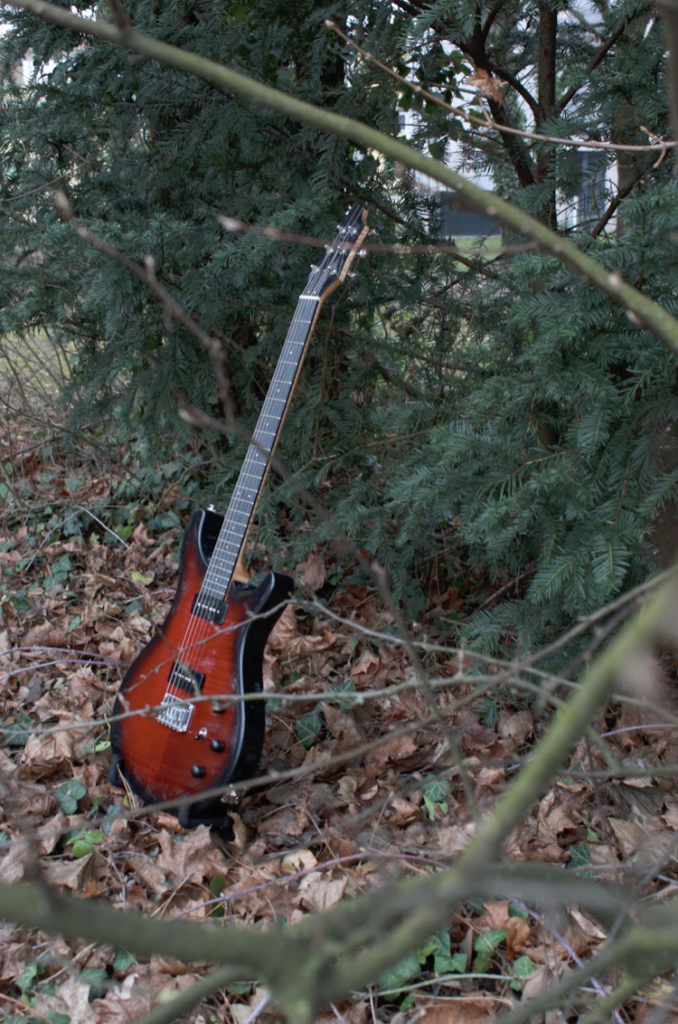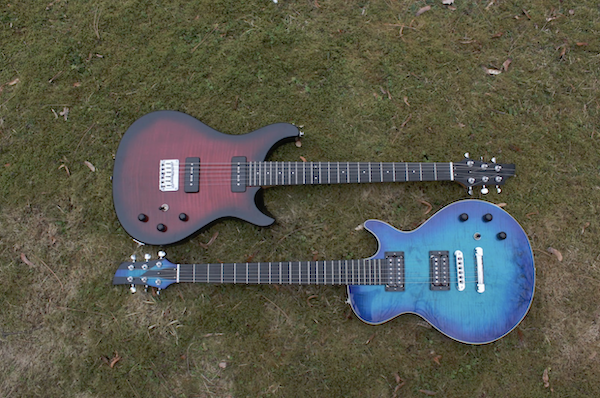A continuation of my discussion with Jacob appears here- but first, a little bit about his background:
“I was born in Huntsville, AL., and quickly took to the great traditions of bluegrass and soul food that surrounded my upbringing. I fell in love with the music of the Appalachian foothills and found myself exploring genre after genre, intaking music like a black hole. My interest in music eventually collided with my love of design and engineering, and became the impetus for the creation of my first instrument. It took eight years until I realized that this was something I genuinely wanted to pursue as a profession, but now having embarked on this journey I find myself excited to improve my skills and craft.”
Onto our conversation-
Does it matter what type of wood you use?
It does. Every wood is different. There’s a metric that’s very important called specific gravity, and the way they used to do this back in the olden days is that they would put pieces of wood in saltwater, and they would see which one floated. Even within the same species of, say, maple, you would have lighter pieces. It should be noted that these are cut to the same dimensions so everything is the same other than the wood itself. The specific density of the wood would vary, but lighter and stiffer wood generally transduces sound a lot better. Whereas if you have more water content or a denser piece of maple it’s not going to transduce that well, so a lot of it has to do with selection.
However, as wood ages it undergoes capillary collapse. Even if you have a 130 year old piece of maple that was waterlogged, it’ll dry out and kind of mature. So in a sense, it gets better with age, which is why you find a lot of good old guitars are prized very highly. All this wood has undergone capillary collapse and become very dense or very light and very stiff.
Interesting. I’m connecting this to something I read about a few years ago about an old growth forest in British Columbia being logged for luxury guitar making.
Yeah, that happened really famously with Brazilian rosewood. What one of my instructors always said, is that luthiers are bullshit artists—there’s a lot of stuff in the luthiere world that people will say improves the sound of the guitar. It’s like “Brazilian rosewood is the best wood for guitar.” It’s kind of fanaticism around certain aspects because, quite frankly, what makes a guitar sound good is quite poorly understood. And that was the founder of the Galloup school’s mission—to figure out scientifically what makes a good guitar and what makes a musical instrument, not just an instrument. It doesn’t actually matter so much what type of wood you use—if you have a bad piece of Brazilian rosewood, it’s going to be a bad piece of wood regardless. It doesn’t matter that it’s Brazilian rosewood. It’s just too heavy and too dense and it won’t carry vibration. But there’s a lot of fanaticism around that.
That’s something I’d like to get away from. I would just like to use wood that I think is good. And actually, there’s a very simple test. If you have a bunch of pieces of wood, you can just flick it—if you tap the wood, generally the lighter pieces will make a higher kind of tone.

That’s fascinating. You mentioned before that you play bass, so you’re a musician as well?
I’m actually not that great a musician myself. I just listen to an obscene amount of music. But thankfully, building is a very different skill set than playing an instrument. My next step is finding a shop. I messaged Joon at the factory and said, “ If there’s any interest in starting any kind of woodworking, I would want to do that.”.
Have you had the chance to teach a class?
I don’t think I’m qualified yet, but I think teaching is something I want to do down the road. Because it’s hard to learn this. You have to go to very specific institutions or you have to find a master and get an apprenticeship. And I think that’s kind of unfortunate, because it’s something more people want to do than there are currently. I think providing accessibility to learn and having a place for that is very important.
In general I’ve noticed that hands-on and craft based teaching is for some reason really separated out from universities, like this one for example, where I think people have a lot of interest and just don’t have access to the materials. I’m also interested in where you source the materials for crafting?
While I was at the school, I was a little scrap rat. There’s a lot of wood that goes through a guitar shop, especially a school. There’s a lot of scrap. So I found some black walnut – enough to make a top for an electric guitar— those pieces were originally for a mandolin that the studio was working on. And I was just diving through the dumpster one day while cleaning up. You clean up the shop twice a day, just before lunch break and just before you go home, and everyone sweeps up all the dust and brushes everything off and takes the trash out. See, I was always the one taking the trash out. So I’d just pick up the trash can and look in and be like, anything good?
These days I do have some selection of wood, but otherwise I would have to either source it from farms around Germany. Thankfully spruce and maple are very plentiful here and they’re great woods for making guitars, but there are also companies that will help you source wood. I think one of them is Espin hardwoods which is, particularly in Europe, one of the better places for instrument makers to source wood because they have it processed into the sizes we need already. But another thing that we were always taught at school was – you need to start your wood collection now, because only about 10% of wood you will ever get is going to be able to make a fantastic musical instrument.
It sounds like you don’t even know if the wood is any good until you’ve already bought and tested it.
Yeah, that’s part of the issue. There’s also no grading system that’s relevant to musical instruments for buying wood because a lot of it has to do with the figure of the wood, like the curls and how the grain looks, but that has very little to do with the actual musicality of the wood. It’s an affectation. So, we were always taught to start with a collection as soon as possible. Because if you have a selection of woods, then you have more control over the instrument you’re making. And that’s not to say that wood that isn’t necessarily musical grade is bad to put into a guitar, it just may not be used for the top which is carrying a lot of the resonance.
And what about the strings?
For an electric guitar, they are steel core with wound nickel around them. It has to be a ferrous material so that they can interact with the magnets of the pickup. That being said, it’s not necessary to use steel strings if you’re making an acoustic. For example, most classical guitars use nylon or gut strings like a violin or viola uses.
So you’d one day like to start a school?
Not necessarily a school, but I think I would take on apprentices quite willingly. You always need extra hands in the shop.
If you find a shop and need an apprentice, let me know. Have you had a chance to exhibit what you’ve built so far?
Will do. I do have these guitars with me in Germany, thankfully. We finally got them through customs, which was holding them hostage. They had a lot of questions. There was a bag of tools and two guitars. They were like, “what is going on here?”.
I’m glad they made it safely. Thank you so much for meeting with me.


Killer interview.